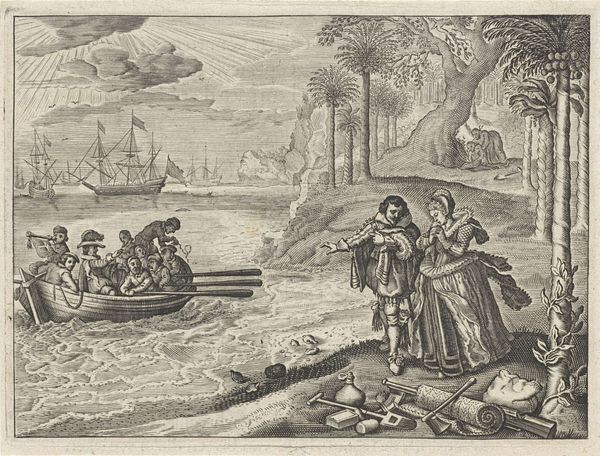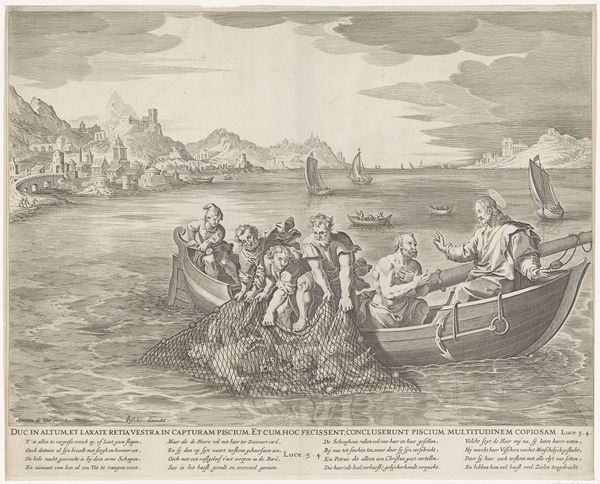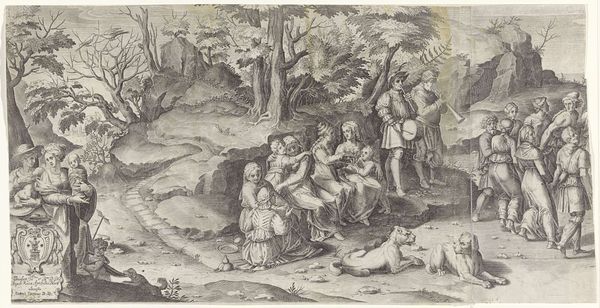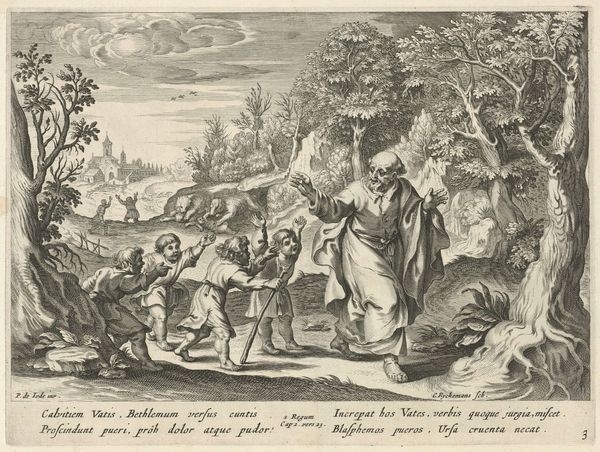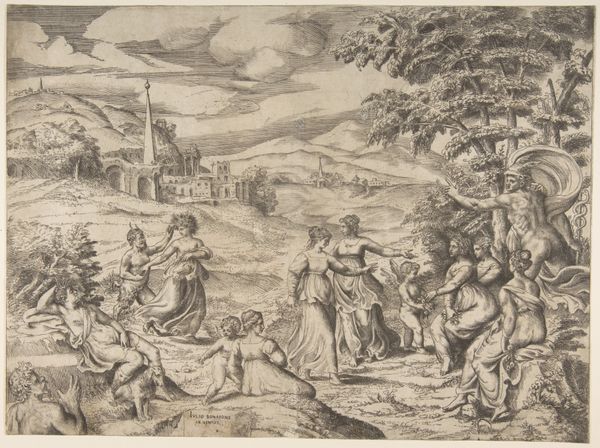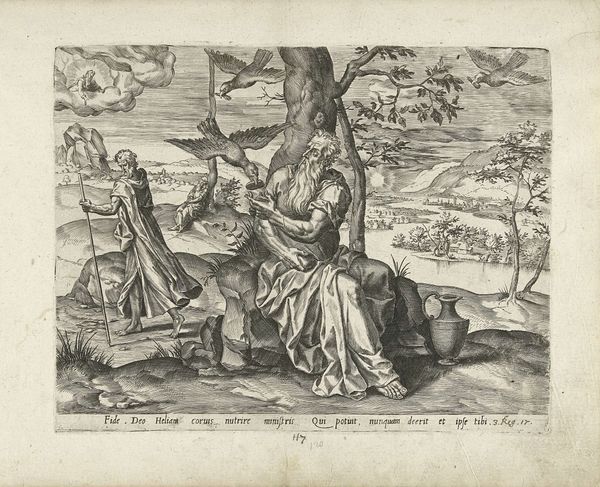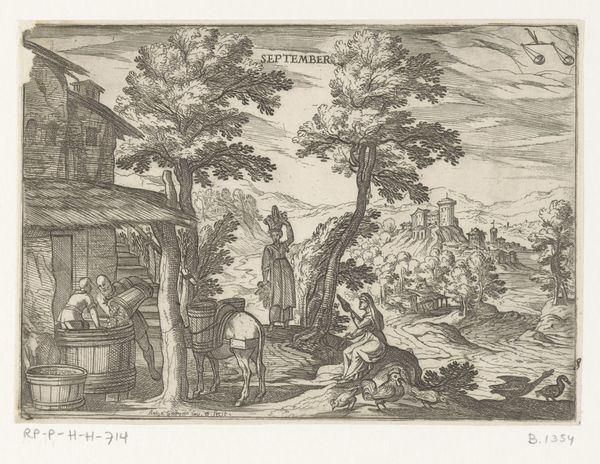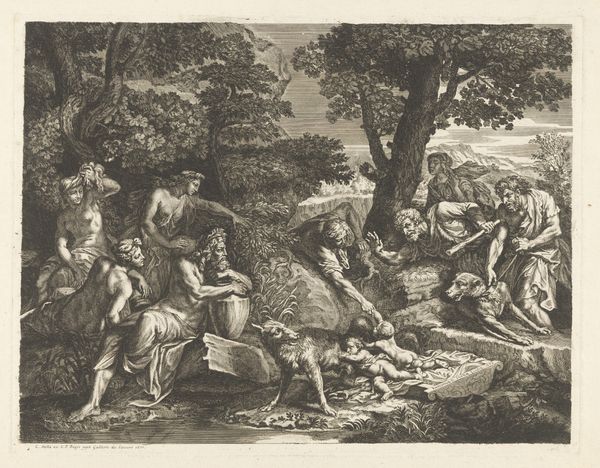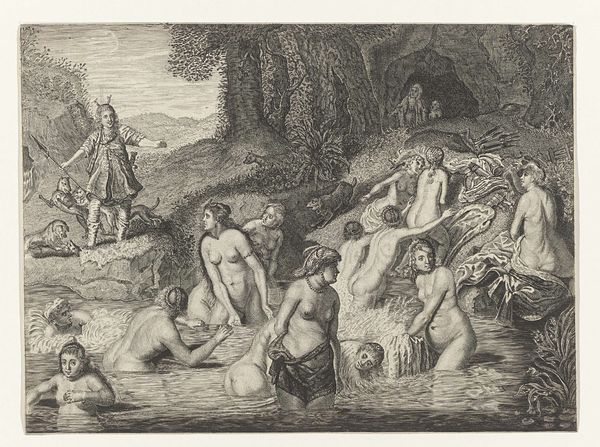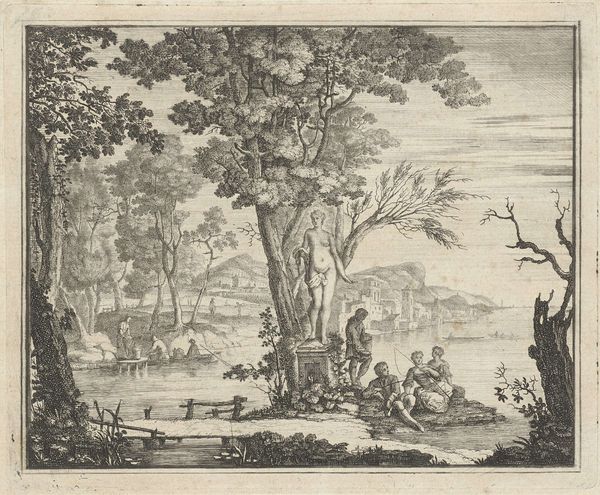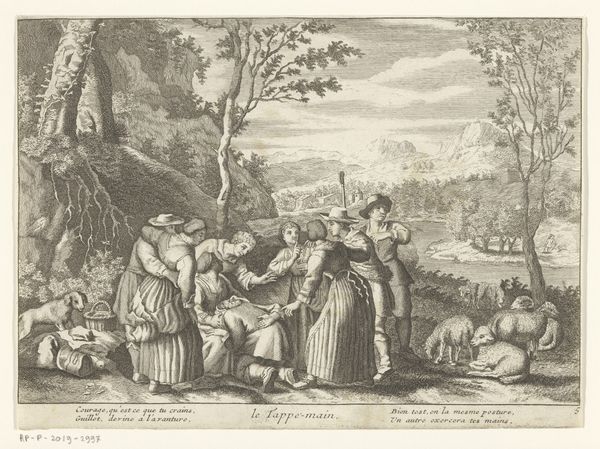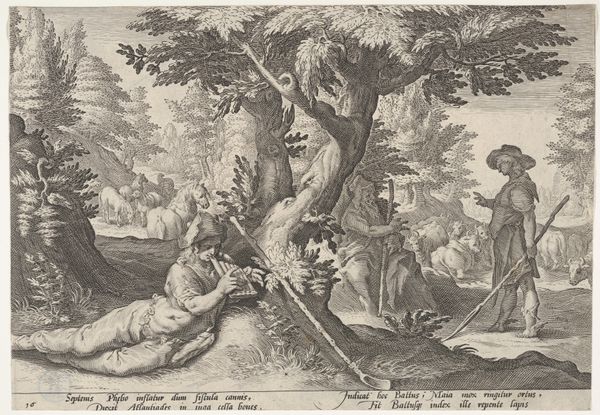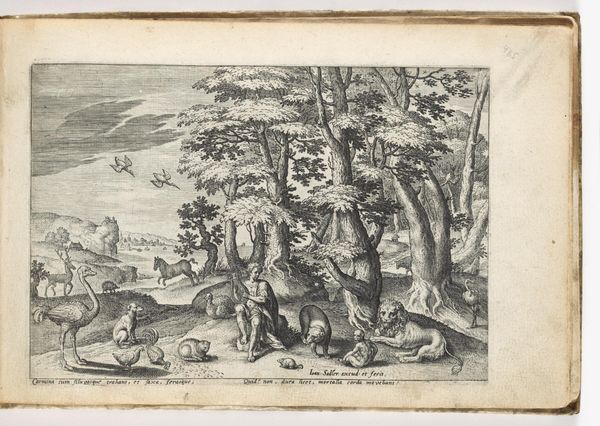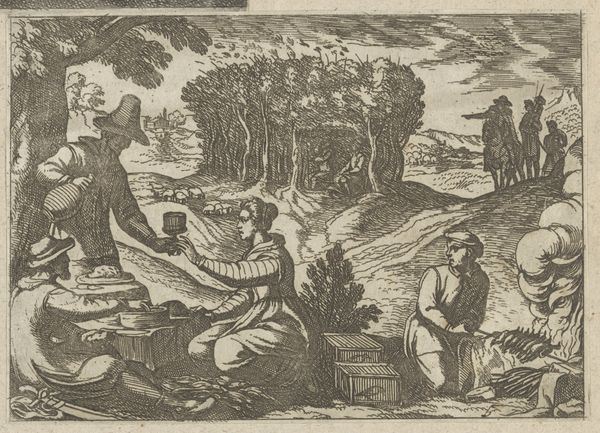
print, engraving
#
narrative-art
#
baroque
#
pen drawing
# print
#
landscape
#
figuration
#
line
#
genre-painting
#
engraving
Dimensions: height 103 mm, width 137 mm
Copyright: Rijks Museum: Open Domain
Editor: Here we have Pieter Serwouters’ "The Banished Lovers," made sometime between 1625 and 1633. It’s an engraving, giving it this delicate, almost miniature feel despite portraying quite a large scene. It feels like a captured moment in a play – dramatic, with the couple on the beach contrasting sharply with the boatload of people departing. What do you see in this piece? Curator: From a materialist perspective, this engraving unveils a fascinating snapshot of 17th-century Dutch society. Consider the tools scattered at the feet of the couple – what do they tell us about labour, social class, and the consumption habits of the time? The act of banishment itself represents a form of social control, literally expelling individuals from the community and its resources. Editor: So you’re focusing less on the drama of the lovers themselves, and more on the societal mechanics at play? I hadn't considered the implications of the objects in the foreground; the tools really contextualize their displacement. Curator: Precisely! The artist has consciously depicted objects that indicate not just practical trades or domestic comfort, but markers of class. Think about how this relates to production. Who creates these objects? For whom? And what happens when the couple is separated from access to production? The means of survival becomes crucial, doesn't it? Editor: That’s a perspective I hadn’t thought of. It's compelling how the tangible objects represent their lost status and future struggles. It makes the scene less about romantic tragedy and more about the harsh realities of societal constraints. Curator: Exactly. It’s a reminder that art is inextricably linked to the material conditions of its creation and reception. Editor: I’ll definitely be paying more attention to the seemingly minor details from now on. The tools aren't just details. They're the story! Curator: Precisely. It’s all about understanding the networks of power embedded within even the most delicate of artistic mediums.
Comments
rijksmuseum about 2 years ago
⋮
Desolation and misery are the bitter fate reserved for unmarried lovers. Rosette and Galant have been abandoned on a deserted island by her brother and the rest of the travelling party because of her pregnancy out of wedlock. The couple’s illegitimate child is being buried under a tree in the background. This print is an illustration to Jacob Cats’ Houwelyck (Marriage), published in 1625.
Join the conversation
Join millions of artists and users on Artera today and experience the ultimate creative platform.
